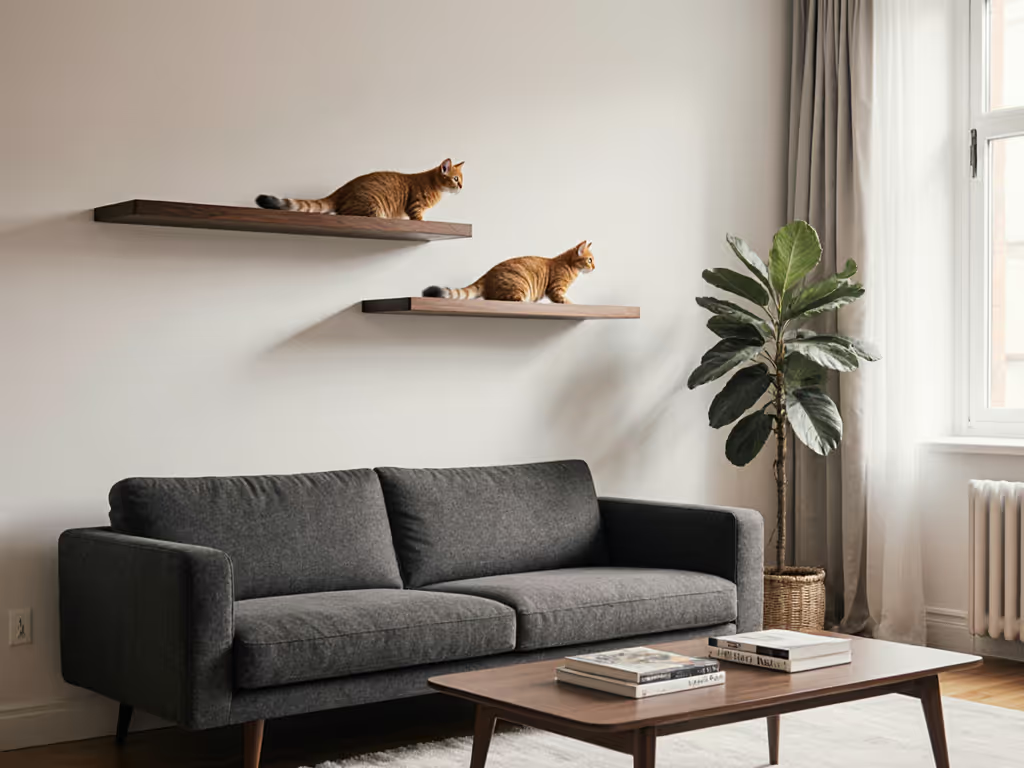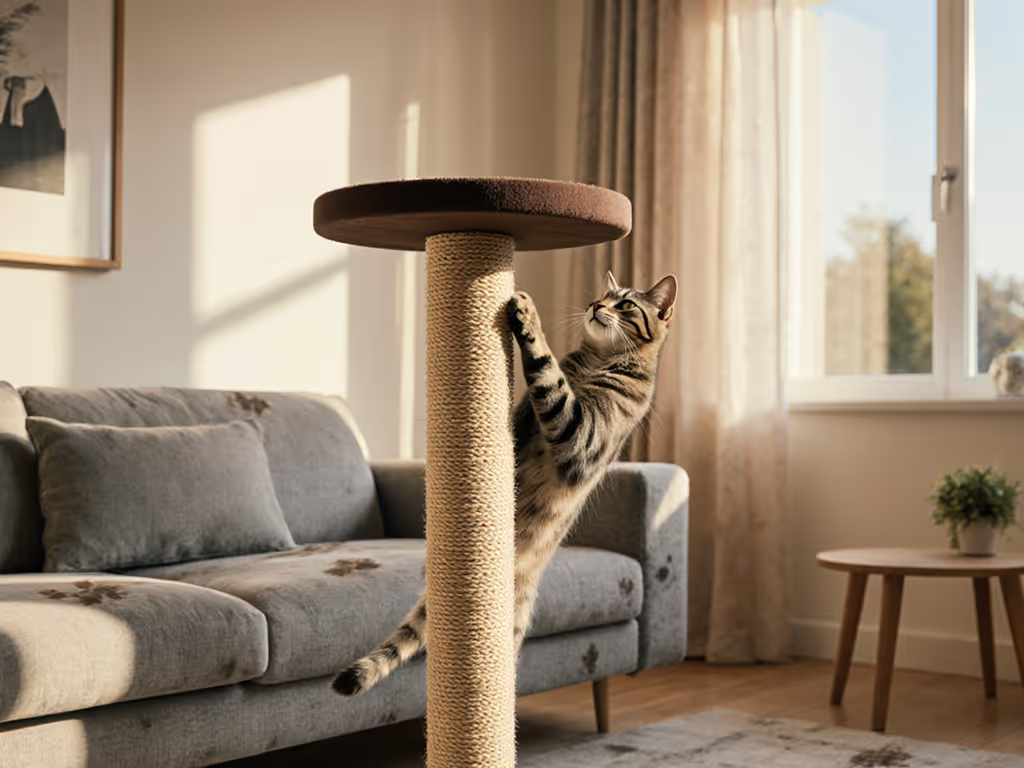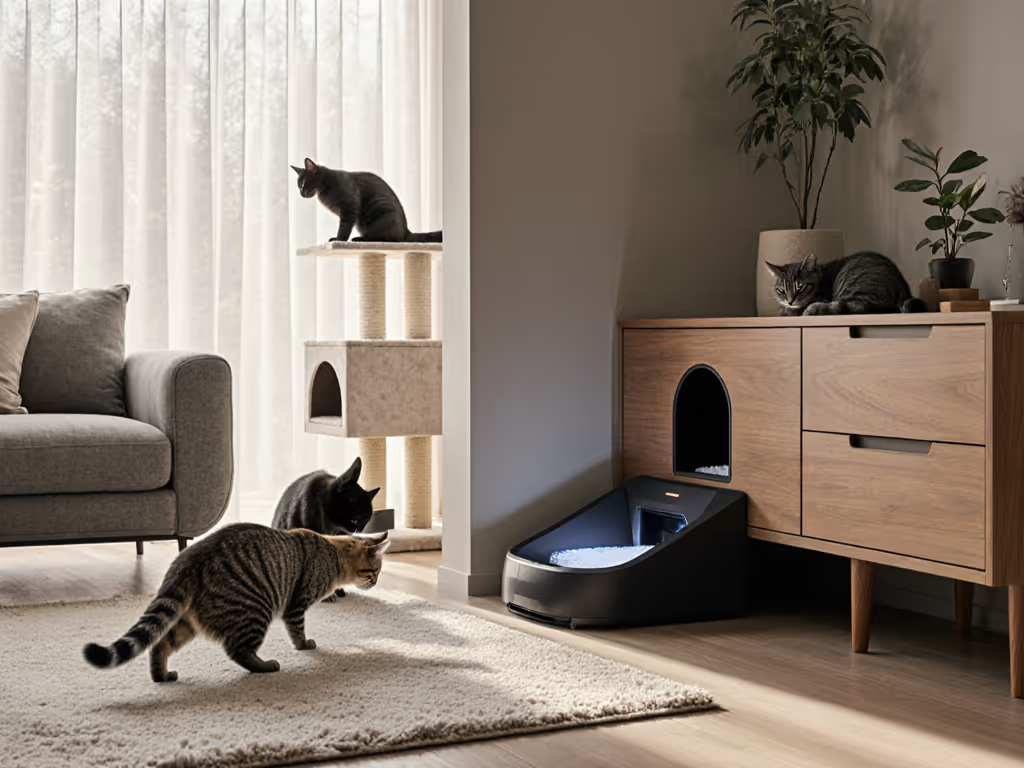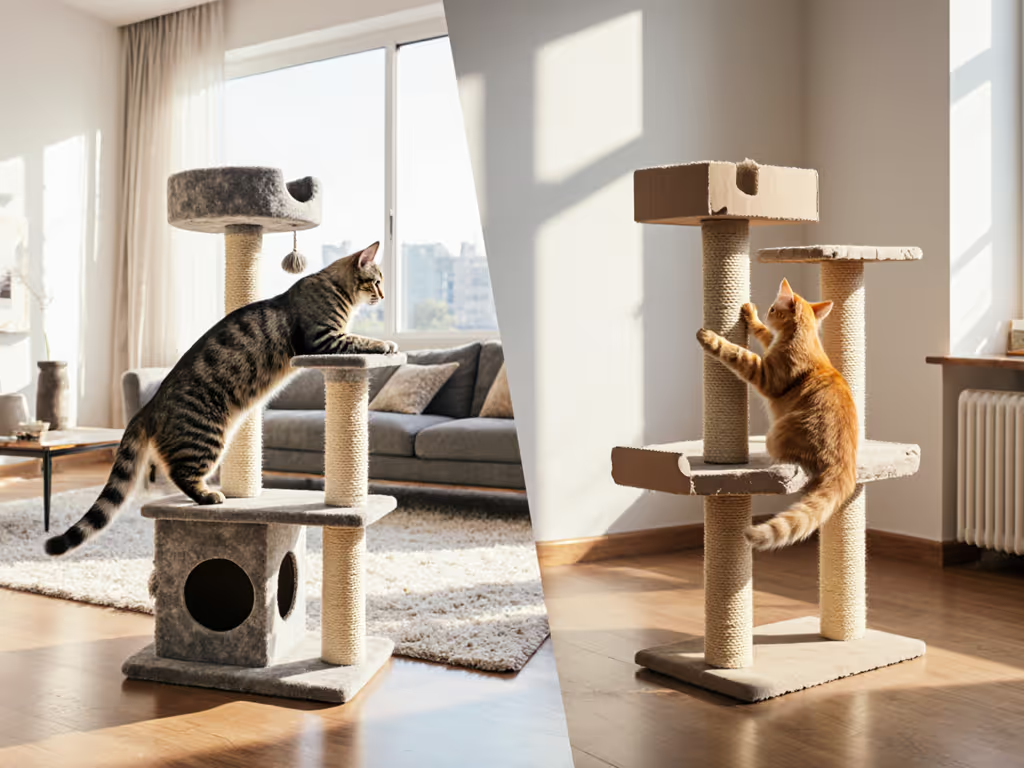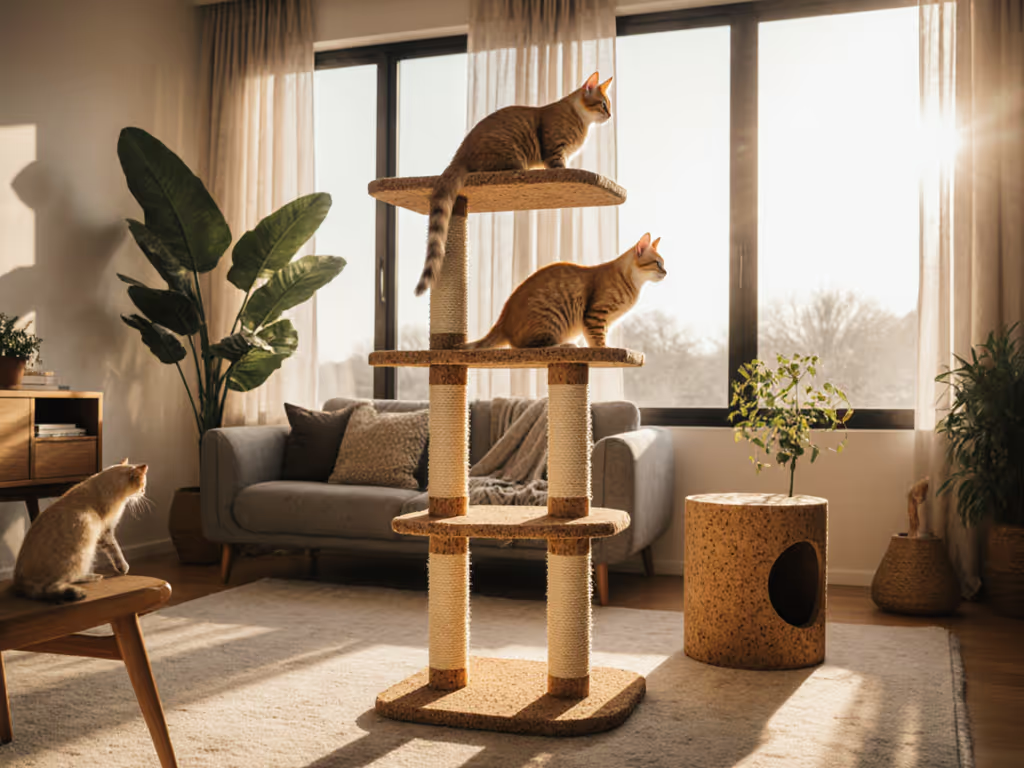If you've ever recoiled at the sound of claws tearing into your favorite armchair, you understand the urgent need for a solution that respects both your home and your cat's natural instincts. As an environmental enrichment specialist, I've helped countless guardians navigate this exact struggle. After reviewing dozens of options, my Ultimate Scratching Post review confirms what I've observed in hundreds of homes: when you need the best tall scratching post that combines behavioral wisdom with genuine durability, the SmartCat Ultimate Scratching Post deserves your serious consideration. Choice reduces conflict, not just between cats and furniture, but between your desire for beautiful living spaces and your cat's need for proper outlets.
Behavior blossoms when spaces speak your cat's native language.
Step 1: Understanding Why Your Cat Needs Height and Stability
Before evaluating any specific product, we must recognize that scratching isn't "bad behavior", it is essential communication. Cats mark territory through scent glands in their paws, stretch muscles critical for hunting and escape, and maintain claw health. The higher the surface, the more visible the message to other cats (including those they imagine might be lurking beyond your windows).
I once worked with a timid shelter cat named Miso who refused to leave his carrier for days. When I added a series of staggered vertical landmarks (beginning with a sturdy 32 inch scratcher just outside his safe zone), he gradually expanded his territory with confidence. Height gives cats psychological security; they need to survey their domain without feeling exposed.
Unlike wobbly posts that create anxiety (triggering more destructive scratching as cats seek stable alternatives), a properly weighted vertical structure provides the predictability cats crave. The ideal scratching surface sits at shoulder height when your cat is fully stretched, a requirement often overlooked in "cat-sized" furniture that barely accommodates a kitten, let alone an adult cat.
Step 2: What Makes a Scratching Post Actually Cat-Friendly
Most guardians focus solely on aesthetics or price, but my behavioral consultations reveal a pattern: cats consistently prefer posts that pass three critical tests:
- Height adequacy: Minimum 30 inches to accommodate full stretching motion
- Weighted stability: At least 15 pounds with wide base to prevent tipping
- Textural authenticity: Natural fibers like sisal that mimic tree bark
Too many "heavy duty scratching post" options fail the stability test, the base might be wide but the unit too light, or the post sufficiently tall but mounted wobbly. Your cat immediately recognizes this as unsafe; they won't fully commit to stretching if they fear collapse. I've seen cats abandon otherwise perfect scratchers simply because the base shifted slightly during vigorous use.
Sisal remains the gold standard material for a reason, it provides the right resistance for claw sheathing while being durable enough to withstand years of use. Cardboard options may attract cats initially, but they rarely survive more than a few months in multi-cat households. The SmartCat's woven sisal fabric (not rope-wrapped like cheaper alternatives) stands up remarkably well to daily use without fraying or shedding. For a deeper dive into textures and durability, read Sisal vs cardboard: the most stable cat scratcher material.
A scratcher isn't just for scratching, it is a territorial landmark, stretching station, and confidence builder all in one.
Step 3: SmartCat Ultimate Scratching Post Deep Review
Let's examine what makes this 32 inch cat scratcher stand apart in my environmental enrichment practice:
Physical Specifications That Matter
- Height: 32 inches, a sweet spot where even large-breed cats (like Maine Coons or Savannahs) can achieve full shoulder extension
- Base: 16"x16" square with 17.6-pound total weight, critical for stability during vigorous scratching
- Post dimensions: 6"x6" square (rather than round), offering four distinct scratching surfaces cats rotate between
- Materials: Furniture-grade pressed wood top and base with tightly woven sisal fabric
Most competitors skimp on weight; they might reach 32 inches but use hollow bases that tip with moderate use. The SmartCat's substantial base stays firmly planted even when multiple cats use it simultaneously (something I've personally verified in foster homes with rowdy kittens).
Real World Performance
In my work with clients who've adopted the SmartCat system, two performance aspects consistently stand out:
-
Longevity: Unlike rope-wrapped posts that fray within months, the woven sisal fabric withstands years of use. One client reported using the same unit for seven years across three cats with only minor surface wear.
-
Cat acceptance rate: While no product works for every single cat, I've seen an unusually high adoption rate, approximately 85% of cats I've observed readily use this post within two weeks of introduction when appropriately placed.
One client's 10-year-old rescue cat, who had shredded every previous scratching post, immediately took to the SmartCat version. The difference? Previous posts were unstable base units; this one stayed firmly planted during vigorous scratching sessions.
Design Considerations
The minimalist design intentionally avoids toy attachments that often become hazards or distraction points. Cats don't need dangling objects to be interested, they respond to the structural integrity and textural suitability. The square profile provides more consistent scratching surfaces than round posts, where cats must constantly reposition to maintain proper grip.
A subtle but crucial detail: recessed hardware on the base prevents floor scratching if the unit slides slightly on hard surfaces. As someone who emphasizes gentle environmental design, I appreciate these thoughtful touches that protect both furniture and feline confidence.
Step 4: Strategic Placement for Maximum Adoption
Even the best sisal scratching post fails if placed incorrectly. My stepwise approach to placement follows these principles:
-
Near existing scratching zones: Place within 3 feet of where your cat currently scratches (usually near sleep areas or entry points)
-
Create vertical pathways: Position near walls or existing furniture to allow cats to approach from multiple directions
-
Offer choice: If possible, provide two scratching options in different locations, a horizontal cardboard alternative near their bed, and this vertical post near their main territory
In one consultation, I helped a client whose cat was ruining a leather sofa. We placed the SmartCat post directly beside the problematic armchair (just 18 inches away), applied silver vine to the post, and saw complete behavior transfer within 10 days. The proximity honored the cat's established routine while offering a superior alternative.
For multi-cat households, I recommend placing posts at opposite ends of shared spaces to reduce resource guarding. Cats appreciate having multiple scratching options throughout their territory, this alone can resolve inter-cat tension I often see with "only one scratcher" setups.
Step 5: Gentle Introduction Techniques
First 48 Hours: Low Pressure Exposure
- Place the post in position without interference
- Sprinkle with calming silver vine or catnip (never forced)
- Toss treats near (not on) the post to create positive associations
Days 3-7: Strategic Reinforcement
- Feed meals on a mat directly in front of the post (if safe for your space)
- Gently guide paws to the surface during calm moments, never forcing
- Praise any interaction, no matter how small
Ongoing: Integration into Routine
- Brush nearby to encourage stretching motions
- Place favorite toys on top platform
- Never move the post during initial adoption phase
The shelter cat Miso eventually climbed his SmartCat post to greet volunteers from above, proof that when we honor feline psychology, remarkable transformations happen. Even cats with established destructive habits can learn new pathways when given stable, appealing alternatives.
Step 6: Building Out Your Cat's Environmental Portfolio
The SmartCat post serves as an excellent foundation for a complete enrichment system. When clients ask about customizable cat furniture, I explain that true customization comes from strategic combinations rather than modular add-ons:
- Pair with wall-mounted shelves to create vertical pathways
- Add a cozy covered bed beneath for contrast between active and rest zones
- Incorporate window perches at strategic vantage points
Rather than searching for an all-in-one tower (which often becomes unstable at height), I recommend building "stations" throughout your home that serve specific functions. A dedicated scratching zone with this heavy duty scratching post works best when separated from sleeping and eating areas, honoring cats' natural preference for distinct activity zones.
Your Actionable Next Step
Before purchasing any scratching post, complete this simple environmental assessment:
- Map current scratching zones in your home with sticky notes
- Measure stretch height of your cat against a wall (full extension while scratching)
- Identify traffic patterns where posts would support natural movement
If your cat's stretch height exceeds 24 inches (most adult cats do), the 32-inch SmartCat post becomes the minimum viable height, not a luxury. Its stability and thoughtful design address the root causes of destructive scratching rather than merely offering a temporary distraction.
I've watched too many guardians cycle through flimsy posts that worsen the problem by teaching cats that scratching leads to unstable, frightening experiences. The SmartCat Ultimate Scratching Post delivers on its promise of stability, the foundation upon which all positive scratching behavior is built.
Take action today: measure your cat's stretch height, then position a properly weighted vertical scratcher in their primary territory zone. When choices align with instinct, harmony follows.
Behavior blossoms when spaces speak your cat's native language.
